Moving Out developer talks accessibility: "We want everyone to be able to finish it, and everyone to be able to play"
Head of SMG Studio Ashley Ringrose explains how the accessibility options and Assist mode came to Moving Out
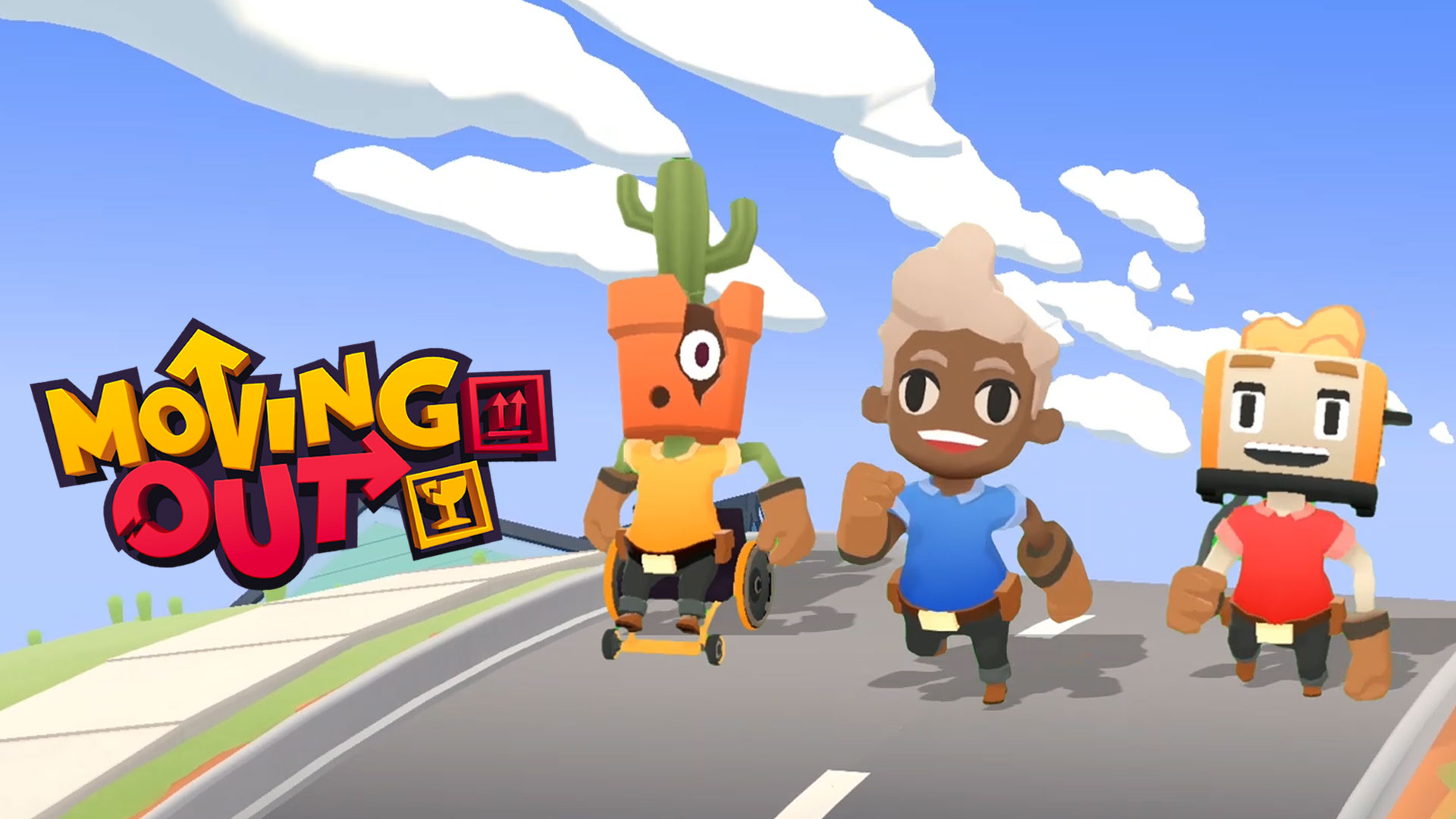
Moving Out packages up what can often be one of the most stressful things you can do in life into a charming, quirky, physics-based couch co-op game that gives off similar vibes to the delightful world of Overcooked. From publisher Team17, Moving Out calls for you to move objects out of a variety of different locations within set time limits, and work as a team to get it all loaded onto a truck parked outside. With its humorous charm, cartoonish art style, and fun premise, Moving Out is the kind of game that appeals to a variety of different players of all age ranges.
With this in mind, Moving Out developer SMG Studio looked for ways to make its multiplayer game more accessible in the hopes of being able to suit the needs of a wide range of player skill levels and abilities. "I think translating languages [in games] and now translating for accessibility, they're almost hand in hand," SMG studio head and founder Ashley Ringrose tells me during a Skype interview. "They're one and the same, you have to do both."
Tailored to you
One of the ways the developers behind Moving Out have tried to make the game more accessible is by adding an Assist mode, which enables you to select from a variety of different options, so players can adjust the difficulty and mechanics. With toggles that let you tailor the game to suit your specific needs, you can set yourself longer time limits if a level is too challenging, reduce the difficulty by removing dangers and slowing down certain elements, be given the option to skip a level if you're unable to get past it, and make heavier items such as couches and pianos lighter so they're easier to lift and move.
"It's important for us not to have people hit this point in the content where they can't progress anymore," Ringrose explains. "We're basically saying, you've reached the limits of your skills, so you can toggle the game to make it easier, and essentially more accessible."
The subject of difficulty settings in games has been the cause of quite a lot of contention online over the past year, but Ringrose believes that giving the players the agency to set their own limits ensures that everyone can enjoy the experience of playing the game without missing out. "We don't remove achievements or unlockables in the game [when using the Assist mode], you still get everything," Ringrose says. "We don't want to tell people this is the right way to play and the wrong way to play. If you want to play that way, you can."
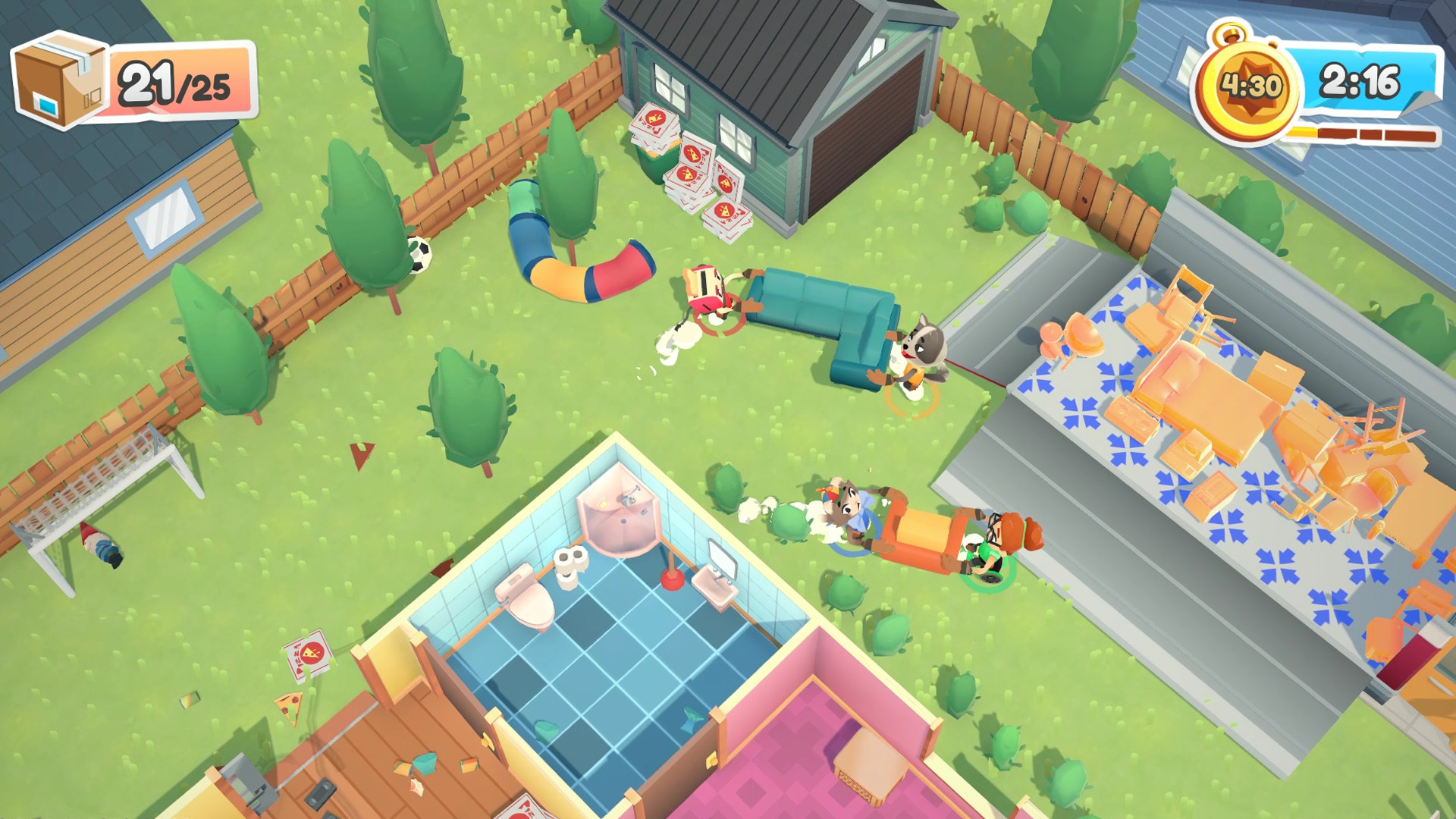
"We don't want to tell people this is the right way to play and the wrong way to play. If you want to play that way, you can."
Ashley Ringrose, studio Head
Ringrose points to Nintendo's assist features in games like Mario Kart, which includes an assisted steering option that his young children use to play the game, as an example of how important these options are. "I've got a seven and three-year-old. In certain games, they can't understand the platforming and they just hit this wall. I jump in and get them past that, but it just becomes, you know, handed over to daddy every time. So we wanted to make it [Moving Out] so it's easier."
It's not just younger players who will benefit from Assist mode, of course. Some of the mechanics require holding or pressing buttons, or trying to move large objects, which can also affect players in different ways, so the team looked to add toggle-able options in the hopes of removing any "walls" that might prevent players from progressing. "We want everyone to be able to finish it," Ringrose adds, "and everyone to be able to play."
Sign up to the GamesRadar+ Newsletter
Weekly digests, tales from the communities you love, and more
User testing
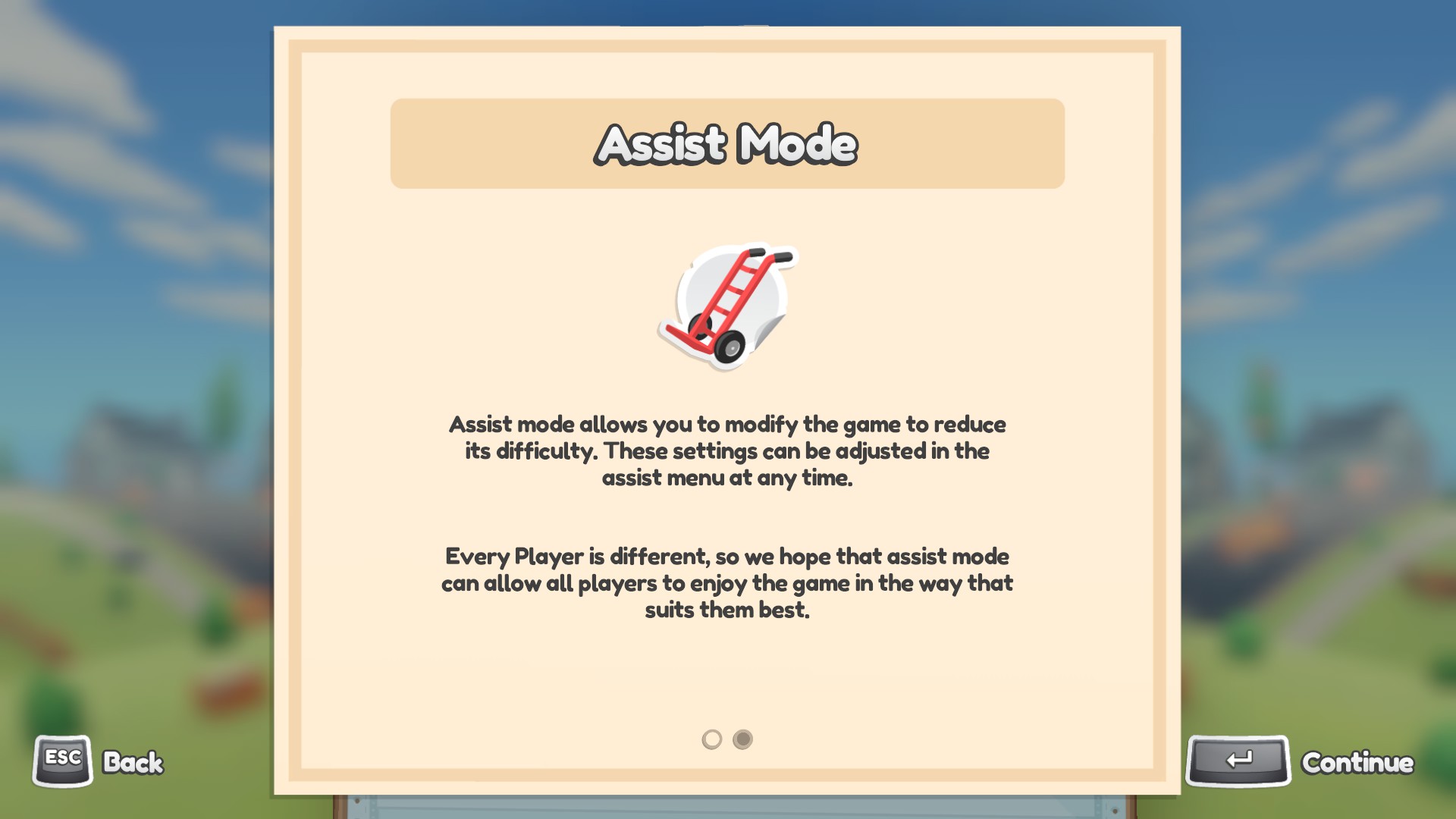
I've always been curious about just how early on in development studios behind new releases think about accessibility features. I take the opportunity to ask Ringrose how early in the development of Moving Out the team considered adding in options, and how they were considered in the first place. One of the options that falls under the game's accessibility options is font size, which enables you to make the UI bigger or smaller in scale depending on your needs. This feature, Ringrose tells me, was considered from the start and it was something the team was very conscious of.
The assist mode, though, came "midway through" development, once user testing began. "We were doing a lot of user testing," he continues. "We did about 140 recorded sessions with people coming into the office. We [recorded] them, captured the footage, and watched them play." The reason the team recorded players as well as the game itself, was to assess their responses to the experience by not only listening to what they had to say while playing, but by looking at their body language too. As the team watched the sessions, there was a lot of debate surrounding how difficult or easy different sections of the game were for various players.
"I think it was a very easy decision to make. You can see this group of people struggling on this level, and these other people flying through it," he says. "We thought it's a better solution to have this assist mode where you can toggle that difficulty."
Other features also came partway through development after more feedback sessions. Adding a remappable keys feature, for instance, came after consulting with disabled players. While it took the most amount of work to implement, as the number one request from those feedback sessions, the team worked to make sure it was added to the game.
Checking the guidelines
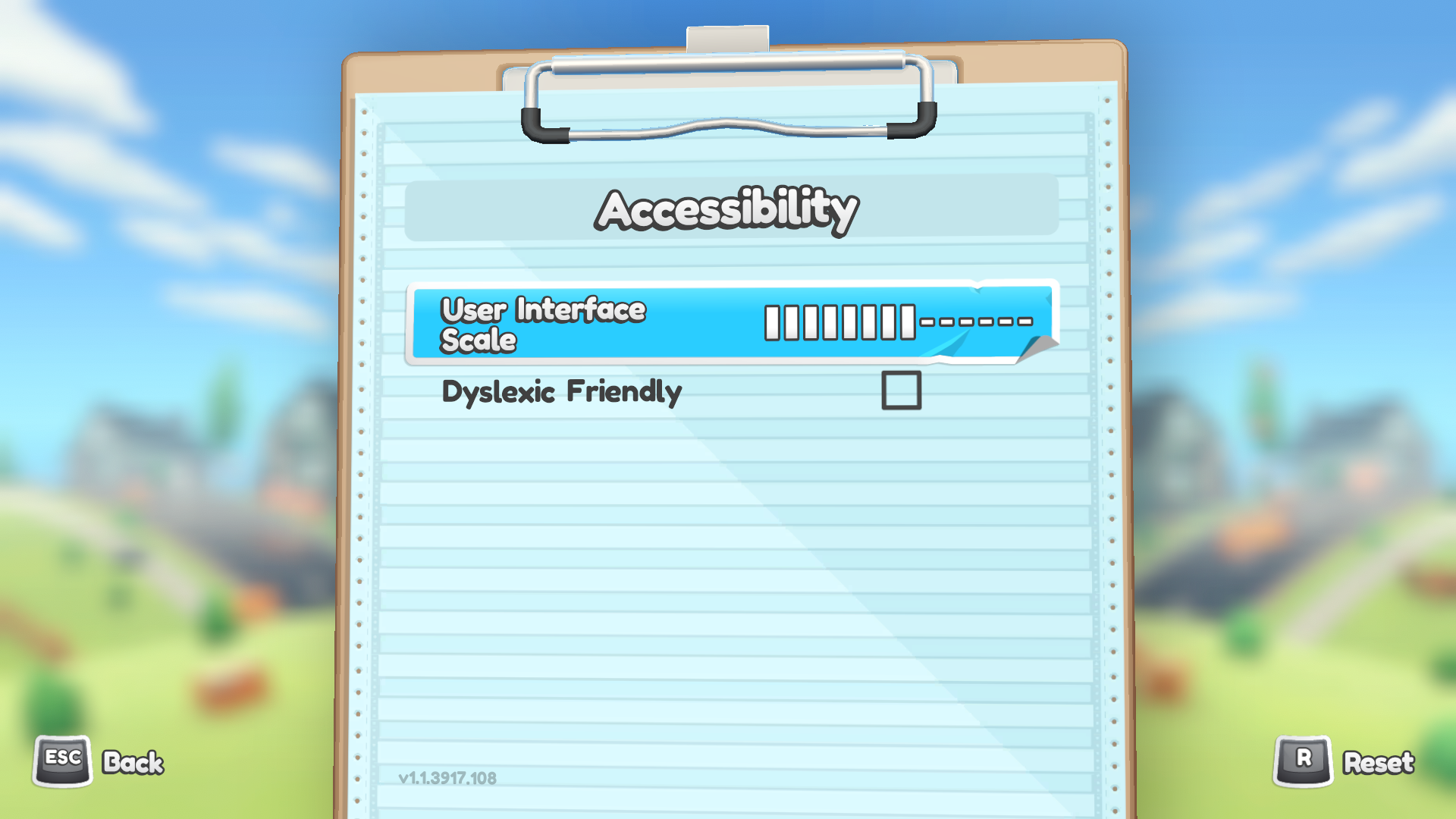
When it came to trying to ensure that Moving Out could cater to the needs of as many different players as possible, Ringrose tells me the team looked to the Games Accessibility Guidelines, which is an open reference developers can look to for guidance about inclusive game design for players with disabilities or impairments. In collaboration with specialists, academics, and studios, the developer-friendly guidelines were created to "avoid unnecessarily excluding players, and ensure that games are just as fun for as wide a range of people as possible."
"We just went through the list saying, 'What can we do? What's relevant to our game?', and just kind of tried to tick off as many as we could, you know, almost trying to set a benchmark as to the best practice." Ringrose goes on to detail how there was a lot of emphasis on the visual side of game design for players with colour blindness, which made the team more mindful of making sure nothing in the game was indicated through colour, so timers have their own distinguishable icons and nothing is "colour bound". The guidelines also helped influence the team's decision to make sure features such as toggles for mechanics were included so players can tailor their set up to suit their own needs.
Character customisation
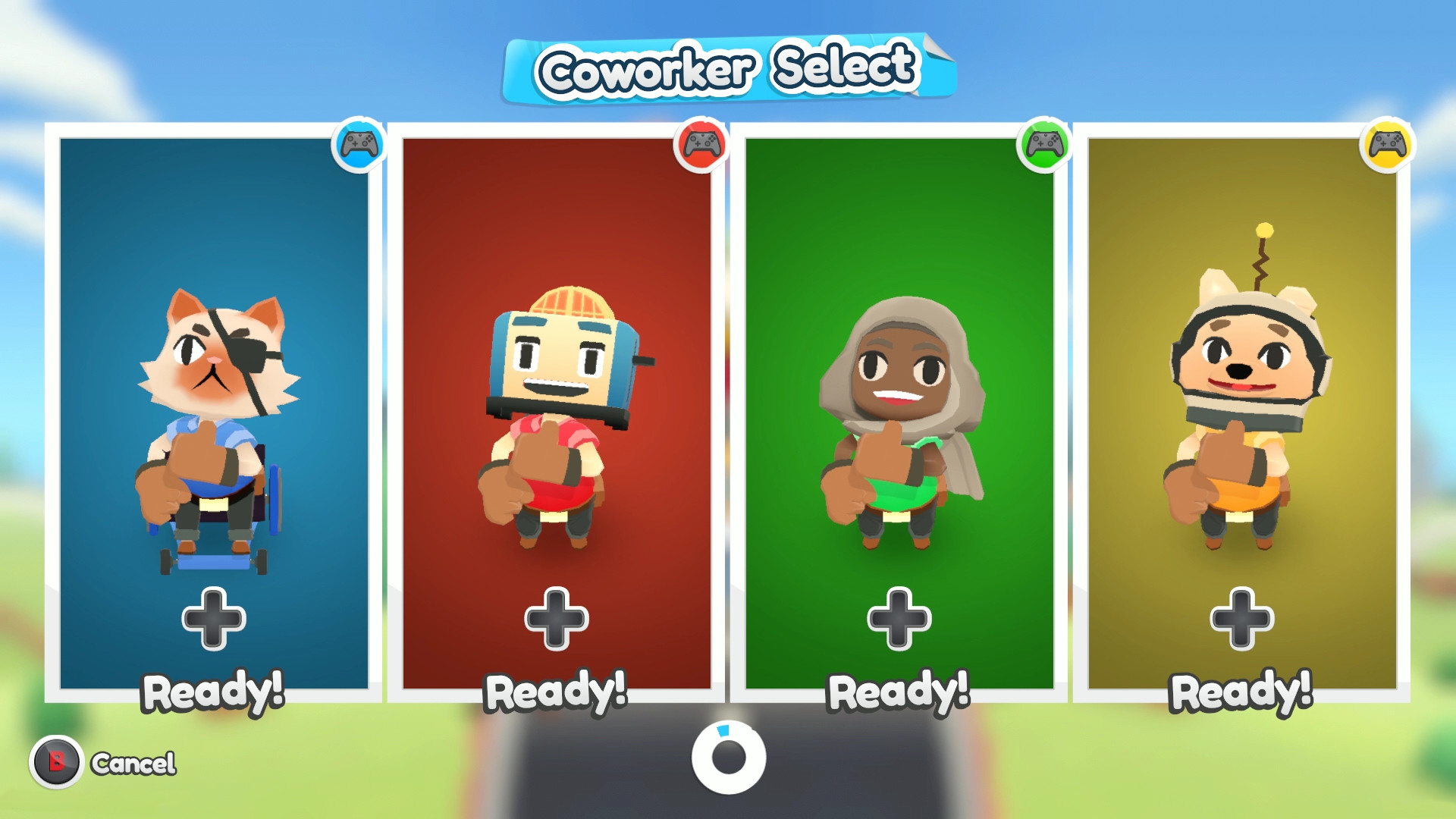
When I first sat down to try out a demo of Moving Out back in February, the first thing that caught my attention was the fact that every character in the game – from a cute dog with a pigeon on its head, to a toaster – has the customisable option of being in a wheelchair. Being able to play characters in wheelchairs is something you don't see enough in video games, and it's the kind of representation we need to see more of. It felt especially heartening that every character you can select from has the option.
Partner developer DevM Games made a game called Extreme Wheelchairing, and Ringrose recalls that the creator behind the game used to receive very positive feedback from wheelchair users, and that was one of the driving forces behind bringing the customisable option into Moving Out.
"There aren't that many games that have wheelchairs in them," considers Ringrose. "So, if we can do that then we're making people feel happy… I think it has been great seeing people respond to that. And I think all of those little decisions add up to just make the game – and gaming in general – more friendly for everyone." In the polishing stages ahead of Moving Out's release next week on April 28, the team has also added emotes and dances into the game, including wheelchair specific moves "so no one's left out".
Finally, as we begin to wrap up the interview, we talk about the future of the industry and the changing attitudes towards accessibility in video games. With the PS5 and Xbox Series X on the horizon, Ringrose shares the hope that the next-generation will try to be even more inclusive and accessible. "These types of topics [accessibility] are definitely becoming more and more mainstay in games, where it's not just an afterthought, where it's not just a patch a week later. These things should just be a given and done from the start. There's no disputing the fact that these things should happen," Ringrose says, adding, "but I think accessibility across the board definitely feels like it's heading in the right direction."
Need something to play with your pals in the meantime? Here's our pick of the best co-op games you can play right now.

I started out writing for the games section of a student-run website as an undergrad, and continued to write about games in my free time during retail and temp jobs for a number of years. Eventually, I earned an MA in magazine journalism at Cardiff University, and soon after got my first official role in the industry as a content editor for Stuff magazine. After writing about all things tech and games-related, I then did a brief stint as a freelancer before I landed my role as a staff writer here at GamesRadar+. Now I get to write features, previews, and reviews, and when I'm not doing that, you can usually find me lost in any one of the Dragon Age or Mass Effect games, tucking into another delightful indie, or drinking far too much tea for my own good.


